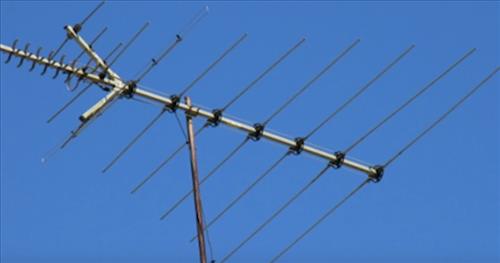It’s funny just how rugged and long lived that original 27 MHz system was.
There must be some rubber duckies that can fit in place. The issue is you want one “tuned” for 27 MHz, and that frequency is so low, that 1/4 wavelength (what a plain wire would be for an antenna) is 109". So for a ducky to work well, it has to actually have a spiral of wire inside about that long. I’m sure they were made at some time, for CB radios.
By the way Dan, microwaves are not horizontal, nor are they vertical. The polarization of a radio wave is set by the transmitting antenna, and you want the receiving antenna to be the same polarization.
And TV antennas are INDEED horizontally polarized, basically a yagi, a dipole with directors in front of the driven element and reflectors behind.

all of those elements are horizontal. The driven element is right behind the little V at the front (left side). The different lengths catch the different frequencies, since the TV band spans such a wide range in frequency. The longer rods pick up the lower frequencies.
(Channel 2 is 54 MHz, the right hand most rods, so 27 MHz would be almost twice as long)
Oh, a vertical antenna, like a whip, transmits something between a horizontal torus (doughnut shaped) and a conical shape (standing on it’s point), depending if you have a 1/4 wave, 1/2 wave/ 5/8 wave, etc, below is a typical “rubber duckie” although they vary wildly. You can see the doughnut shape in the vertical view (as if you standing beside someone looking at them, the horizontal view is from the sky down at the ground)

Just some interesting (I hope) derailment


